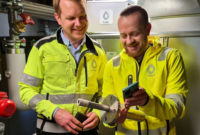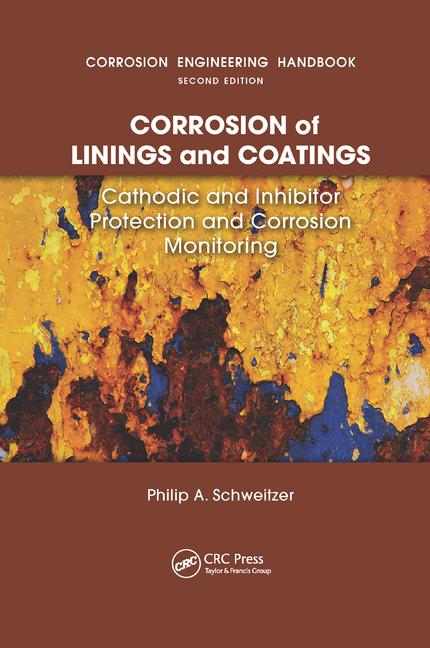The Missing Link: Real-Time UV Monitoring and Measurement


Once upon a time in a land far, far away, gas stations were called service stations and they had a team of attendants to pump your gas, clean your windshield and lift the hood to check your oil every time you filled up…and gas cost less than 30 cents per gallon. To many of today’s kids, this is as much of a fairy tale as Cinderella or Snow White.
Is it any wonder why automobile designers install both oil dip-sticks and dashboard oil warning lights? Wouldn’t just one of these suffice?
Obviously, while these measurement devices are related, they measure different oil properties and have markedly different functions. The risk of driving your car without enough oil is important enough to merit constant vigil – and you obviously can’t check the dip stick while driving. On the other hand, the need for absolute oil level measurements during maintenance (like oil changes and tune ups) or to provide mechanics with a quantitative measure when diagnosing engine problems requires the dip-stick.
Despite the risks, most UV systems operate without a warning light or a dip-stick. (“Dip-stick” in this case refers to a test or measurement device and not a person running the line.) Even the best-managed lines too often rely only on periodic checks with a belt radiometer as the means of measuring UV cure. But, like driving without a warning light, the potential damage that can occur by operating a UV line without a warning light should stop operators in their track and cause them to consider the value of adding real-time UV measurement.
Having worked on literally hundreds of production lines, it’s ironic that while almost no system designer would supply a thermal convection oven without a process thermocouple, we rarely see a system with a real-time UV sensor installed. This is ironic considering that UV curing is often associated with high-speed production for things like printing, optical fiber, packaging, CD/DVD manufacturing, or high-speed wood finishing lines. These are applications where an undetected problem could mean hundreds, even thousands of bad parts in just hours. By the time these guys break out their belt radiometer it’s far too late. It is locking the barn door after the horse has gone.
The Big Three automakers tackled this problem during the 1990s when they drafted the QS-9000 standard that required process monitoring rather than allowing suppliers to rely on finished parts inspection alone. They realized that preventing defects and not just fixing them was the key to cutting costs.
Fortunately, the technology to continuously monitor UV curing not only exists, but is easy to implement, and cost-effective. This paper describes what you need to measure to safeguard your line and how to do it.

Changes to UV Output in the Real World
In day-to-day operation, UV lamps, particularly arc lamp systems, show a pronounced drop in irradiance over time. Like a spark plug, continuous and repeated use cuts the lamp’s life from the first time it’s fired. It’s not unusual to see a 50% change in output after less than 1,000 hours of use.Cleanliness of the reflector, changes in cooling, and power supply problems can all impact irradiance. So can any changes in distance of the lamp to the part or angle of the bulb that might occur from handling during maintenance.

What to Measure?
There are two parameters of UV curing that most users should measure regularly: peak irradiance and energy density. Let’s take a quick look at what each of these terms means.Irradiance: In lay terms, this measures how “bright” the UV lamp is. Irradiance can be affected in a number of ways: by “increasing the wattage” just as you might by switching from a 25W to a 60W light bulb, or, by “turning up or down” the intensity through a variable power supply. The common measure of irradiance is Watts/cm2.
Energy Density: Time is the second factor critical to proper curing, and this is referred to as energy density. You may also hear it called “dose” even though this term does not accurately fit. As sun-tanners can attest, it’s not just the intensity of the UV source that produces their glow, but exposure time. A few seconds in even the brightest sunlight won’t produce a bronzed body.
To produce properly cured products, both irradiance and time must be within the prescribed material specification. Like most cooking recipes that require a certain time and temperature, UV recipes usually require minimum irradiance and exposure time (energy density). The common measure of energy density is Joules/cm2. (This is a simplification and assumes that you have the right type of UV source for your formulation and that other process parameters are controlled and maintained.)
Belt Radiometers versus On-Line Sensors
The conventional approach to checking UV system performance (in those refreshing instances where it’s being done) usually relies on running a logging radiometer through the system. The belt radiometer is the ideal tool for this purpose.The latest generation of belt radiometers records peak irradiance and energy density over a number of important UV bands simultaneously. Since the belt radiometer mimics a production part, it provides very useful information about the UV exposure of production parts.
The belt radiometer, like the car dip-stick, provides an absolute, quantitative evaluation of cure. Its values can be compared to the material specification as an indicator of how the process is running, and provides enormous insight when troubleshooting is needed.
But since it is a data logging device, it cannot provide the continuous, real-time monitoring needed to detect problems that might occur between data collection runs. For these continuous measurements, a simple sensor integrated either into the process chamber, or installed into the UV source itself, provides a simple but effective solution.
These sensors provide continuous irradiance data, which when combined with line speed monitoring and control, provide an added layer of process security. So the prudent operator will utilize both tools: a logging belt radiometer for quantitative, absolute data required for establishing, optimizing, maintaining and troubleshooting the process; and a compact, on-line sensor to continuously watch for changes in UV output. Again, these devices aren’t any more redundant than a dip-stick is to a warning light.

Selecting and Installing Real-Time UV Monitoring
Having determined that a warning light on your UV line can save you time, money and perhaps some gray hair – how should this device best be designed and integrated into the system?The best solution embodies a few topics: sensor selection, sensor placement and data handling.

Sensor Design and Selection
The ideal UV sensor must embody a number of features. First it must be compact enough to be located in the system, often in close quarters, without interfering with the production process. Today’s sensors measure as small as 0.57” x 0.60” x 0.75” (1.45 x 1.52 x 1.91 cm), making them a truly compact device. These sensors are even available with a purge design which allows a whisper of low-pressure air or nitrogen to keep the sensor window clean even in dirty environments where airborne contaminants might interfere with measurements.The sensors are available in a variety of fixed spectral bandwidth responses (UVA, UVB, UVC, UVV) that cover short, mid and long wave UV. Each sensor incorporates a single bandwidth in the optics of the sensor. The actual bandwidth that you decide to use for the sensor is based upon a combination of things including formulation, lamp system, bulb type (mercury or mercury-additive), process window and application. An application with a relatively steady UV source can go ‘out of spec’ because reflectors and/or quartz plates/tubes get dirty and less UV is transmitted to the cure surface. In other cases, it is more important to monitor changing output conditions from the actual source. Some customers may decide to monitor the source with a long wave sensor (UVA or UVV) and reflectors with a short wave (UVC) sensor.
One of the daunting challenges to sensor design is making a unit tough and stable enough for the extreme exposure in high-intensity UV applications where extreme UV irradiance and heat are common. The compact sensor has been designed to withstand thousands of hours of direct exposure to UV without noticeable degradation. For example, solarization, which is the deterioration of optical components common with exposure to intense UV light has been virtually eliminated in the latest generation of sensors. These sensors supply an analog output signal, proportional to the UV light exposure to an electronic interface.
Sensor Location
While the compact and rugged design of the sensor provides a great deal of flexibility in where the sensor can be mounted, some locations make more sense than others. Locating the sensor near or in the lamp itself has several advantages, since it provides the most direct measurement of the light source. The sensors have a narrow field of view and on multi-lamp systems, individual sensors can supply data for each lamp without the confusing effects of exposure to several lamps at a time. But great care should be taken with mounting a sensor in the lamp housing, and the lamp manufacturer needs to be consulted. The sensor should not interfere with the proper or safe operation of the lamp.Fortunately, a few lamp manufacturers are now warming to the idea of installing these sensors in the lamp during construction. The relatively small incremental cost of this valuable feature makes sense and we expect to see more lamps with built-in monitoring in the future.
Sensors can be installed viewing the lamp in many locations provided that the temperature is below 100 °C. Typically a sensor just a few inches from the lamp will provide suitable conditions. Adjusting the sensor so that it “looks at” the reflected light and not directly at the bulb provides useful data, since the condition and efficiency of the reflector can account for a significant proportion of the UV available for curing, (and is directly proportional to the direct output of the bulb anyway).
Alternatively, the compact sensor can be installed in the process chamber where it observes the lamp or reflected light. Recall that with online monitoring we are more concerned with relative, minute-to-minute changes in measured UV rather than in the value of the absolute reading itself. This premise allows greater latitude in locating sensors.
Data Handling and Integration
Assuming you have chosen the right sensor and properly positioned it to monitor your lamps, the only remaining question is what to do with the sensor output. The sensor provides an analog signal, which varies proportionally with the incident UV light. Sensors can be connected directly to a self-contained, pre-engineered interface which provides a real-time read out, alarms and other features, or connected to a standard DIN rail signal processing module that converts the signals into a standard 0-10 volt signal that can be utilized by industrial PC or PLC control systems.The simplest UV intensity display module provides a straightforward display of a single lamp’s status. The module provides the capability of setting a reference point, typically the 100% output level of a new lamp. The digital readout shown on the panel mounted unit can then provide a continuous “percent-of-power” reading that compares the current conditions to the UV conditions when the bulb was new and reflectors clean. A user-settable low-threshold limit can also be programmed into the module, which will provide both a visual warning light (your dashboard oil light!) and activate a relay closure so that additional actions can be triggered when the lamp is not operating within the process window. These simple pre-assembled panel mount modules are easily integrated into any existing system and engineered to be easily installed in the system electrical enclosure.
A more sophisticated, 4-lamp version of the panel mount display, dubbed Multibrite®, allows simultaneous monitoring of four sensors. A user selectable dial on the interface allows the percentage of full power of any of the four sensors to be displayed as well as quick visual monitoring of the status of all four lamps with audible and LED alarms and relay closures. The Multibrite is fully assembled and self contained, and is supplied in a standard 19’ rack mount enclosure for easy installation.
For those plants that desire a more customized solution, the compact sensor and DIN rail transceiver are the building blocks for a completely flexible architecture. The module processes the compact sensor signal and provides a corresponding 0-10 volt analog signal that can be fed to an appropriate PLC or PC control system. Customized screens including password protection, alarm thresholds, data graphing, data export for statistical process control and other features can be designed.
For more information see www.eit.com or www.uvrobotics.com.
Looking for a reprint of this article?
From high-res PDFs to custom plaques, order your copy today!






